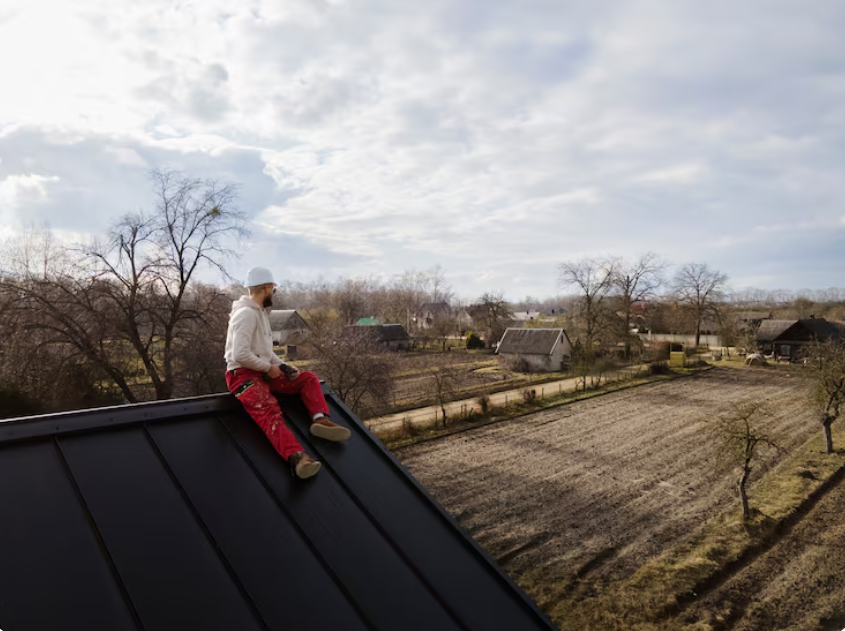Few industries feel the effects of climate change and insurance reform as directly as roofing. Across the United States, more frequent storms, rising material costs, and shifting insurance policies are reshaping how contractors, manufacturers, and homeowners approach the roofs that protect their properties.
Once considered a cyclical, weather-dependent trade, roofing has now become a dynamic and data-driven industry that must adapt to new environmental realities.
Extreme Weather, Extreme Impact
The U.S. experiences more billion-dollar weather disasters than ever before. Hurricanes, hail, windstorms, and wildfires are not only increasing in frequency but also in intensity — and roofs are often the first structures to take the hit.
In states like Texas, Florida, and Colorado, hailstorms have become a costly annual event. Roof damage represents one of the largest categories of insurance claims nationwide, accounting for billions in payouts each year. Homeowners are responding by investing in stronger, more impact-resistant materials designed to withstand these extreme conditions.
Metal, slate, and composite roofing systems are seeing unprecedented growth because of their longevity and performance. Even Colorado Springs roofing companies have shifted focus toward Class 4 impact-rated shingles and reinforced underlayments that protect against both hail and high-altitude UV exposure.
The Insurance Shake-Up
With damage claims on the rise, the insurance industry has been forced to evolve — and homeowners are feeling the effects. Premiums in storm-prone areas have soared, while some carriers are exiting high-risk markets altogether. Others have implemented stricter claim requirements or higher deductibles for wind and hail coverage.
This has placed additional pressure on homeowners to make smarter roofing decisions. Investing in premium materials can now mean not only fewer repairs but also lower long-term insurance costs. In many cases, policies reward those who upgrade to impact-resistant or energy-efficient roofing systems with reduced rates or special discounts.
Contractors have also had to adjust, becoming de facto insurance liaisons who help clients navigate claims, documentation, and compliance. The most trusted roofing companies now offer end-to-end support — from inspection reports and photo evidence to direct collaboration with adjusters.
Building Codes and Resilient Standards
Local and state governments have begun tightening building codes in response to repeated weather-related losses. Florida’s post-hurricane reforms are now seen as a national model, requiring higher wind resistance ratings and improved fastening systems.
Similar policies are spreading across the Midwest and Mountain West, where snow loads and hail impacts dictate roof design. For roofing professionals, staying compliant isn’t optional — it’s a matter of business survival. Manufacturers are responding in kind, producing new materials that meet or exceed these emerging standards while balancing cost-efficiency and design flexibility.
The Push Toward Sustainability
Climate change has not only increased storm severity but also sparked demand for environmentally conscious roofing solutions. Solar integration, reflective “cool roofs,” and recycled materials are now mainstream options. These systems help reduce energy use, mitigate urban heat, and even qualify for tax credits or insurance incentives.
Many forward-thinking contractors are helping clients calculate the long-term ROI of sustainable roofs. The benefits extend beyond lower bills — resilient, energy-efficient roofs can improve resale value and reduce carbon footprints, making them both a financial and ethical investment.
Looking Ahead
The intersection of climate and insurance is transforming the roofing industry into one defined by resilience, innovation, and accountability.
Roofing companies that once operated seasonally are now becoming full-service providers offering inspections, storm monitoring, energy solutions, and long-term maintenance programs. Insurance companies are pushing consumers toward smarter, stronger construction. And homeowners are learning that the right roof can make the difference between a minor inconvenience and a catastrophic loss.
The American roofing market is no longer just about keeping out the rain — it’s about building systems strong enough to face whatever tomorrow’s skies might bring.

